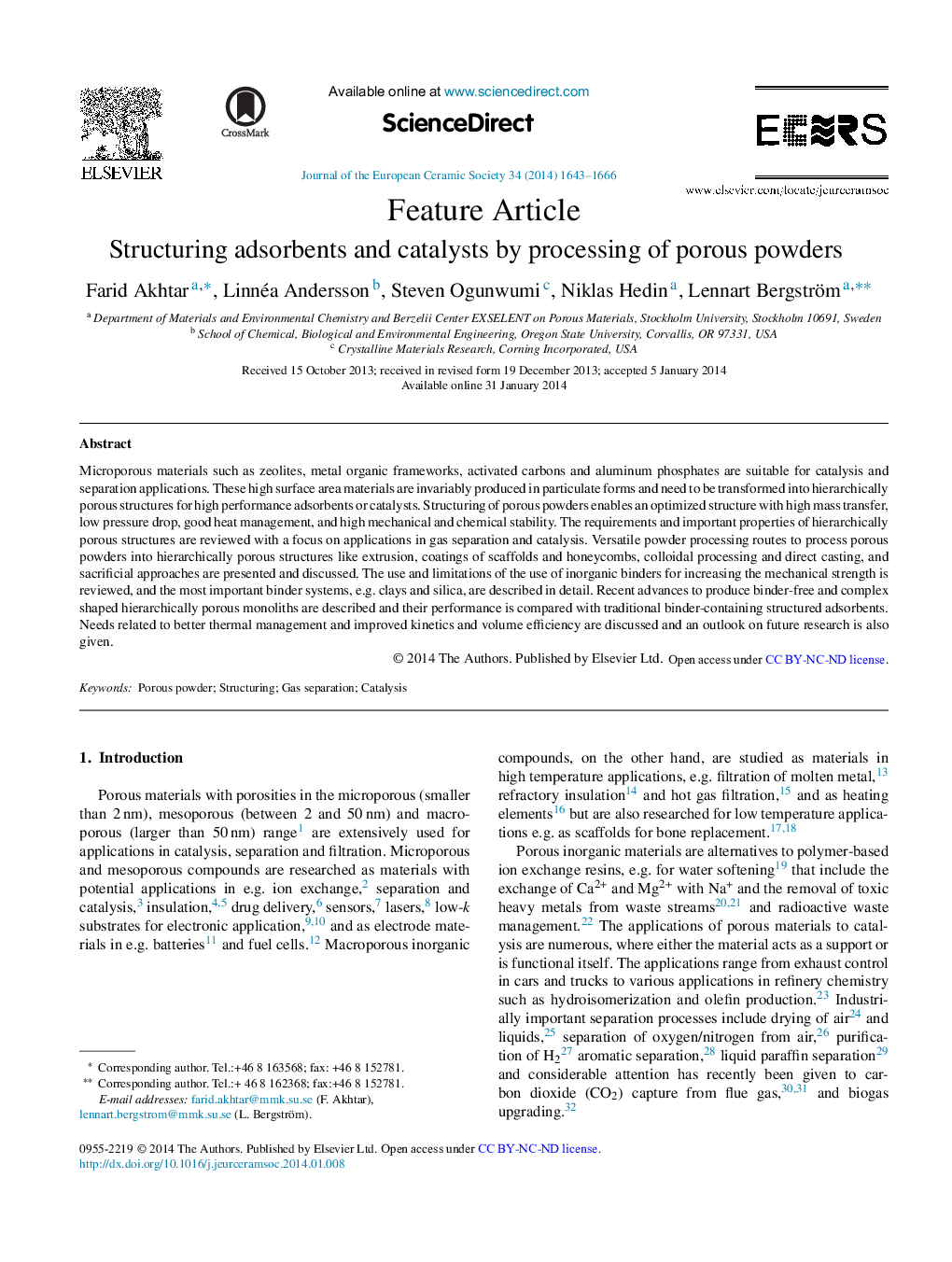| Article ID | Journal | Published Year | Pages | File Type |
|---|---|---|---|---|
| 10629613 | Journal of the European Ceramic Society | 2014 | 24 Pages |
Abstract
Microporous materials such as zeolites, metal organic frameworks, activated carbons and aluminum phosphates are suitable for catalysis and separation applications. These high surface area materials are invariably produced in particulate forms and need to be transformed into hierarchically porous structures for high performance adsorbents or catalysts. Structuring of porous powders enables an optimized structure with high mass transfer, low pressure drop, good heat management, and high mechanical and chemical stability. The requirements and important properties of hierarchically porous structures are reviewed with a focus on applications in gas separation and catalysis. Versatile powder processing routes to process porous powders into hierarchically porous structures like extrusion, coatings of scaffolds and honeycombs, colloidal processing and direct casting, and sacrificial approaches are presented and discussed. The use and limitations of the use of inorganic binders for increasing the mechanical strength is reviewed, and the most important binder systems, e.g. clays and silica, are described in detail. Recent advances to produce binder-free and complex shaped hierarchically porous monoliths are described and their performance is compared with traditional binder-containing structured adsorbents. Needs related to better thermal management and improved kinetics and volume efficiency are discussed and an outlook on future research is also given.
Keywords
Related Topics
Physical Sciences and Engineering
Materials Science
Ceramics and Composites
Authors
Farid Akhtar, Linnéa Andersson, Steven Ogunwumi, Niklas Hedin, Lennart Bergström,
